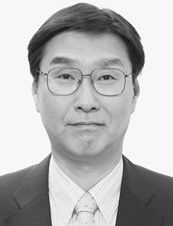Foreword

No.23 March 2018 - Special Issue on “Steel Sheet for Can-making”, “Steel Bar and Wire Rod” and “Slag Products”
Foreword

WATANABE Atsushi
Although the decision by President Donald Trump of the United States to withdraw from the Paris Agreement became a topic of discussion in 2017, satisfying both environment and economy, for example, in measures to prevent global warming and various other environmental countermeasures, is an important problem, and the steel industry is also committed to strengthening its efforts in this regard. In this, the creation of a recycling society will make a large contribution to reducing CO2, and is an issue where the steel industry is making proactive efforts.
Iron and steel slag are byproducts of iron and steel manufacturing processes, and are also the largest type of industrial byproducts in Japan, which produces approximately 40 million tons each year. Production of slag at JFE Steel is about 12 million tons per year. These materials are processed into various kinds of “Iron and steel slag products” that take advantage of this enormous volume and the special characteristics of the chemical composition of slag, and are utilized effectively as recycled resources as substitutes for limited natural resources. Iron and steel slag products are also expected to make a contribution as environmental materials with added value in the field of coexistence with the environment to improve the water quality and bottom sediments of marine areas, create fishing grounds, etc.
This “Special Issue on Slag Products” introduces the condition of use of iron and steel slag as recycled resources such as raw material for cement, aggregate for concrete, base course material for roads and ground improvement material, the development of new valued added products, and recycling of iron sources and heat recovery in raw material slag production.
In the area of steelmaking slag products, this issue introduces environmental improvement technologies for marine areas through examples of improvement of bottom sediments by the sulfide absorption effect of steel slag utilizing the special features of its chemical composition, and improvement of water quality as a base for adhesion of marine organisms. In the field of fisheries, an example of creation of a fishing ground by using steel slag as a material for shoal construction is presented. Recent trends in construction materials are also introduced, such as effective utilization of dredged soil and use of sea water in mixing JFE Steel’s steel slag hydrated matrix product Ferroform™. Our new steel slag products have received the Eco-Products Award and the Infrastructure Technology Development Award of Japan’s Ministry of Land, Infrastructure, Transport and Tourism, and we are now actively working toward social implementation and social contribution.
Where blast furnace slag products are concerned, efforts in the field of high quality cement concrete include the development of high strength, dense aggregate, and high durability concrete utilizing the features of ground granulated blast furnace slag and blast furnace slag fine aggregate, which are introduced in this Special Issue.
In our slag business, we are working to realize a sustainable society coexisting with the global environment by promoting technological development and product development that enable customers to use “Iron and steel slag products” guaranteed by environmental standards and quality standards as effective recycled environmental resources and materials, under the JFE Group’s Corporate Vision of “Contributing to society with the world’s most innovative technology. ” I ask for the further guidance and cooperation of all those concerned so that we can realize this goal.



